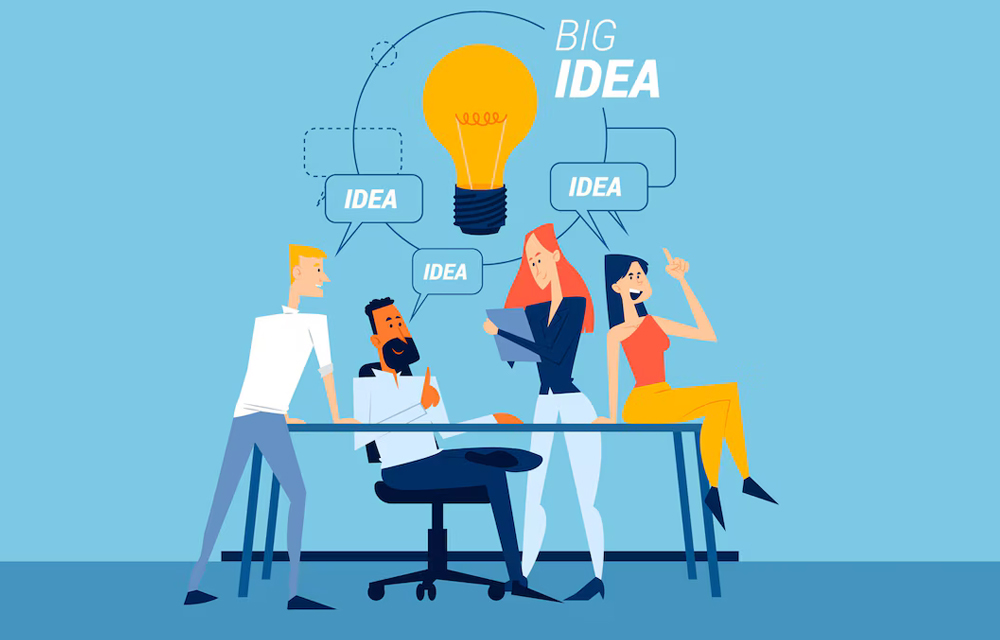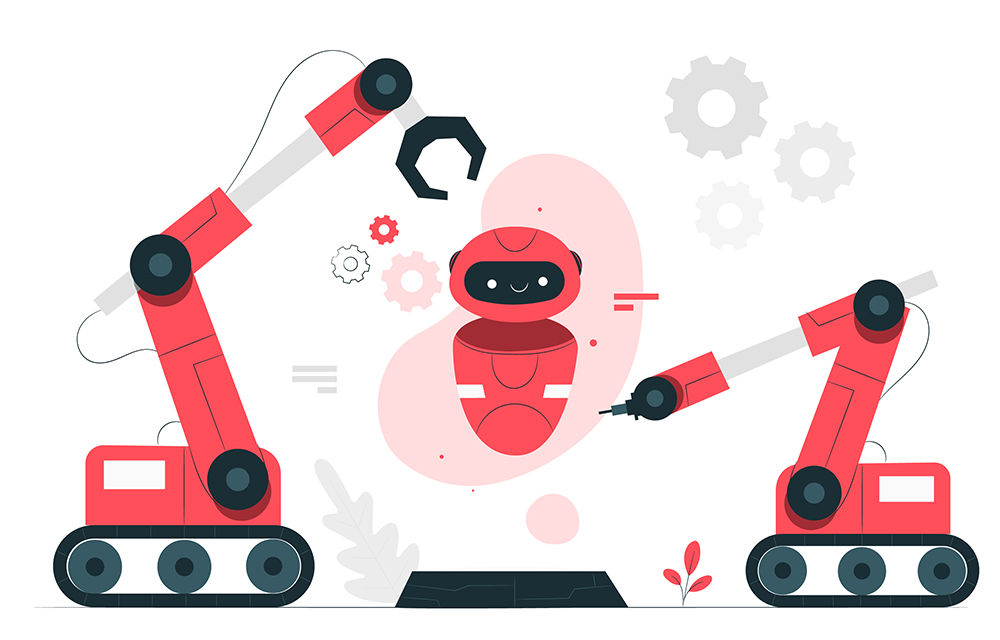Introduction
In today’s competitive landscape, fostering a culture of innovation is essential for organizational success. Companies that embrace innovation are better positioned to adapt to market changes, outperform competitors, and meet evolving customer needs. But cultivating this culture goes beyond just encouraging creative ideas; it requires a fundamental shift in how a business operates.
In this blog, we’ll explore how to build a culture of innovation in the workplace. Let’s take a look.
Key Characteristics of Innovative Workplaces:
1. Openness to New Ideas:
- Idea Flow: Innovative organizations foster an environment where all employees, regardless of their role or seniority, are encouraged to share their ideas.
- Feedback Culture: Constructive feedback is valued and used to refine and improve ideas. Employees feel comfortable proposing unconventional solutions without fear of immediate dismissal or criticism.
2. Risk-Taking and Experimentation:
- Calculated Risk-Taking: In a culture of innovation, calculated risks are embraced. Employees are encouraged to experiment with new approaches and learn from both successes and failures.
- Safe Failure: Failure is viewed as a natural part of the innovation process rather than a setback. Lessons learned from failed experiments are seen as valuable insights for future endeavors.
3. Collaboration and Cross-Pollination:
- Team Collaboration: Collaboration across different departments and teams is crucial for innovation. Diverse skill sets and viewpoints contribute to more comprehensive and creative solutions.
- Cross-Pollination: Encouraging interactions between employees from various functions or backgrounds can lead to the emergence of novel ideas and innovative approaches.
4. Empowerment and Autonomy:
- Empowered Employees: Employees are given the autonomy to pursue new ideas and initiatives.
- Supportive Leadership: Leaders play a key role in providing resources, time, and support for innovative projects, ensuring that employees have the tools they need to experiment and succeed.
5. Continuous Learning and Improvement:
- Learning Environment: A commitment to ongoing learning and development helps employees stay abreast of industry trends and new technologies.
- Adaptability: The organization remains flexible and adaptive to change, continuously refining its processes and strategies based on new insights and market shifts.
Leadership’s Role in Fostering Innovation
1. Vision and Commitment:
- Articulating a Clear Vision:
- Defining Innovation Goals: Effective leaders communicate a clear vision for innovation that aligns with the organization’s overall strategy.
- Setting Expectations: Leaders must set clear expectations for innovation, outlining what they hope to achieve and how employees can contribute to this vision.
- Demonstrating Commitment:
- Leading by Example: Leaders should actively participate in innovation initiatives and demonstrate their commitment by engaging in creative processes, attending brainstorming sessions, and supporting new projects.
- Allocating Resources: Leaders are responsible for providing the necessary resources—such as time, budget, and tools—needed for innovation.
2. Empowering Employees:
- Autonomy and Ownership:
- Encouraging Initiative: Leaders empower employees by granting them the autonomy to explore and develop new ideas.
- Supporting Innovation Initiatives: Leaders should back employees' initiatives by offering encouragement, guidance, and resources, thereby removing obstacles that might hinder their progress.
- Providing Support and Guidance:
- Mentorship: Offering mentorship and coaching helps employees navigate the challenges of innovation and develop their ideas more effectively. Leaders should provide constructive feedback and support throughout the innovation process.
- Creating Safe Spaces: Leaders must ensure that the work environment is safe for experimentation.
3. Supporting Risk-Taking:
- Encouraging Experimentation:
- Promoting Risk-Taking: Leaders should encourage employees to experiment with new ideas and approaches.
- Celebrating Efforts: Recognizing and celebrating the efforts of employees who take risks, regardless of the outcome, reinforces the value of experimentation and learning.
- Learning from Failure:
- Analytical Approach: Leaders must foster a culture where failures are analyzed constructively. Understanding what went wrong and learning from mistakes are critical to refining processes and strategies.
- Resilient Mindset: By promoting a resilient mindset, leaders help employees view failure as a steppingstone rather than a setback, which encourages continued innovation and improvement.
4. Building and Sustaining a Collaborative Environment:
- Facilitating Cross-Functional Collaboration:
- Promoting Teamwork: Leaders should create opportunities for employees from different departments and backgrounds to collaborate. Cross-functional teams can generate diverse ideas and solutions that might not emerge in siloed settings.
- Providing Collaborative Tools: Investing in collaborative tools and technologies that enable seamless communication and teamwork helps facilitate the exchange of ideas and collaborative problem-solving.
- Encouraging Open Communication:
- Feedback Mechanisms: Leaders should establish channels for open communication where employees can freely share their ideas and feedback. Regularly soliciting input from all levels of the organization helps in identifying potential areas for innovation.
- Transparency: Maintaining transparency about decision-making processes and how ideas are evaluated and implemented builds trust and ensures that employees feel their contributions are valued.
5. Recognizing and Rewarding Innovation:
- Incentive Programs:
- Recognition and Rewards: Implementing recognition and reward programs that acknowledge innovative contributions helps motivate employees and reinforce the importance of innovation.
- Career Development: Providing career development opportunities, such as promotions or skill-building workshops, as a reward for innovative achievements can further encourage employees to engage in creative thinking.
- Celebrating Successes:
- Showcasing Achievements: Leaders should celebrate and showcase successful innovations to highlight their impact and inspire others.
- Acknowledging Team Efforts: Recognizing the collective efforts of teams that contribute to successful innovations fosters a sense of accomplishment and reinforces the value of collaborative work.

Building an Innovative Environment
1. Encouraging Open Communication:
- Creating Channels for Idea Sharing:
- Open Forums and Meetings: Establish regular forums or meetings where employees can present their ideas, provide feedback, and discuss potential improvements.
- Anonymous Feedback Systems: Implement systems for anonymous feedback to allow employees to share their ideas or concerns without fear of judgment or retaliation.
- Fostering a Culture of Listening:
- Active Listening: Leaders and managers should practice active listening, showing genuine interest in employees' ideas and concerns.
- Constructive Feedback: Provide constructive feedback that focuses on the potential and value of ideas rather than immediately critiquing them.
2. Providing Resources:
- Allocating Time and Budget:
- Dedicated Time for Innovation: Allow employees to dedicate a portion of their work time to exploring new ideas and projects.
- Funding for Projects: Provide financial resources for experimental projects, prototypes, or research.
- Access to Tools and Technology:
- Innovative Tools: Equip employees with the latest tools and technologies that facilitate creativity and problem-solving.
- Training and Development: Offer training programs that enhance employees’ skills and knowledge related to innovation.
3. Creating Collaborative Spaces:
- Physical Spaces:
- Designing Creative Workspaces: Design office spaces that encourage collaboration and creativity.
- Flexible Environments: Create flexible work environments that can be adapted for different types of work, such as quiet areas for focused tasks and open areas for collaborative activities.
- Virtual Collaboration:
- Digital Platforms: Implement digital platforms that facilitate virtual collaboration, such as project management tools, communication apps, and collaborative software.
- Online Communities: Foster online communities or forums where employees can share ideas, ask questions, and collaborate on projects.
4. Supporting Continuous Learning:
- Educational Opportunities:
- Workshops and Seminars: Offer workshops, seminars, and courses on topics related to innovation, creativity, and emerging trends. Continuous learning helps employees stay informed and inspired.
- Conferences and Networking: Encourage participation in industry conferences, networking events, and innovation forums. Exposure to external ideas and practices can stimulate new thinking and provide fresh perspectives.
- Knowledge Sharing:
- Internal Knowledge Base: Create an internal knowledge base or repository where employees can access information, case studies, and best practices related to innovation.
- Mentorship Programs: Establish mentorship programs where experienced innovators can guide and support less experienced employees. Mentorship helps in developing skills and encouraging innovative thinking.
- Facilitating Knowledge Exchange:
- Job Rotation: Implement job rotation programs to allow employees to experience different roles and functions within the organization.
- Collaborative Initiatives: Promote collaborative initiatives and partnerships with external organizations, such as startups, research institutions, or industry groups.
Also Read: How to Foster Happiness in a Global Workplace?
Conclusion
Fostering a culture of innovation is crucial for any organization looking to stay competitive and thrive in today’s fast-paced world. By understanding what constitutes an innovative culture and the role of leadership in nurturing it, businesses can create an environment where creativity flourishes.
As you work towards cultivating a culture of innovation in your workplace, remember that it’s an ongoing process that requires commitment and adaptability.
How can Brickwork help you?
At Brickwork, innovation is a core driver of our success. Every team member plays a role in advancing our services, with frontline employees being pivotal due to their direct interactions with customers. We blend expertise, creativity, and technology to boost performance, uncover innovative solutions, and achieve excellence in service delivery.
Contact us today for more information on various virtual administrative services.





